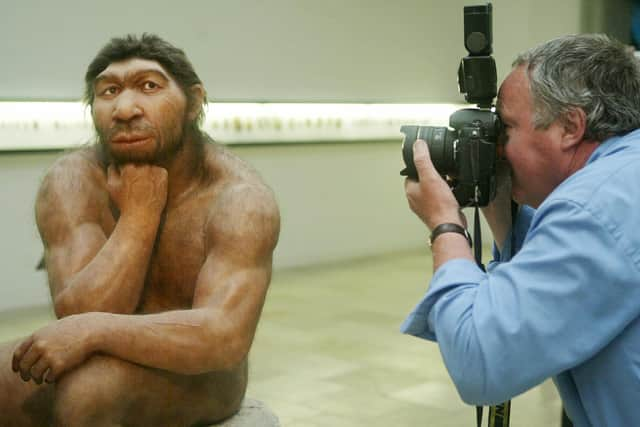Neanderthals: researchers say they have lived as a "different human form" instead of separate species
and live on Freeview channel 276
Neanderthals lived much closer to a "different human form" according to a new study, which suggests they were much more intelligent than previously thought and skilled enough to control fire to cook food.
The study, which was published in the journal PLOS One suggests that Neanderthals were capable of symbolic thought, had varied diets and were creative beings, stating that they were just as skilled as as early sapiens who lived millennia later.
Advertisement
Hide AdAdvertisement
Hide AdThe research compared the remains of structured fires found in the Gruta de Oliveira in central Portugal - an important European archaeological sites for the Middle Palaeolithic - with the cave being part of the Almonda karst system.


The oldest layers of the cave have passages that date back to around 120,000 years ago, and the most recent to about 40,000 with Neanderthals likely living in this place between 100,000 and 70,000 years ago. Around a dozen hearts were intentionally built and used in the cave, at levels of about 30 sq metres and 6m deep - suggesting the Neanderthals cooked their food.
There were also evidence of burnt bones of cooked goats, deer, horses, aurochs (extinct bulls), rhinos and turtles, which were probably laid on their carapace and stewed on hot stones in the cave but the researchers are unsure how the Neanderthals started a fire.
Study co-author Diego Angelucci said: “We demonstrate that there is no doubt that Neanderthals could make a fire and that fire was a central element in their daily life. We found burnt bones, burnt wood and ash remains.
Advertisement
Hide AdAdvertisement
Hide Ad"The rock underneath has been reddened by the heat: this is a crucial detail because it tells us that the structure is in a primary position, and it has always been there. Fire is a fundamental element in their daily lives. It makes the place comfortable and helps socialization. It gives back that basic idea of ‘home’ that perhaps could also apply to them."
Theorising how they started fire, the researchers said: "Perhaps they did as in Neolithic times, striking flint rocks against another rock to throw sparks on a tinder, such as a dry nest for example. This is a prehistoric technique that was discovered by studying Ötzi, the Ice man. So far however, we have found no evidence of this."
When excavating layers covering about 30,000 years, the researchers compared the data with other sites in the same area dating back to a more recent period when Homo sapiens were confirmed in the area and found no difference.
Angelucci said: "We found no difference: they lived in the caves in similar ways. Their skills are also a sign of intelligence. They did not belong to different species, I would say that they were different human forms.”
Comment Guidelines
National World encourages reader discussion on our stories. User feedback, insights and back-and-forth exchanges add a rich layer of context to reporting. Please review our Community Guidelines before commenting.
